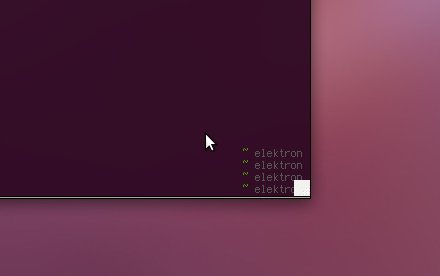@PowerDNS_Bert Thank you for: http://powerdnssec.org/downloads/packages/ !
Tue May 31 07:09:39 +0000 2011
Useless renaming of variables: CUR="${PWD}" #actual #code #bash
Tue May 31 10:35:17 +0000 2011
svn should support the -a flag \(as a noop\)
Tue May 31 12:23:04 +0000 2011
Whenever I see a screenshot of Ubuntu 10.10 I can’t help to think: Remember those go’old days?
Tue May 31 12:51:11 +0000 2011
Replying to @sspans
Dat moet helemaal een mooie tijd zijn geweest!
